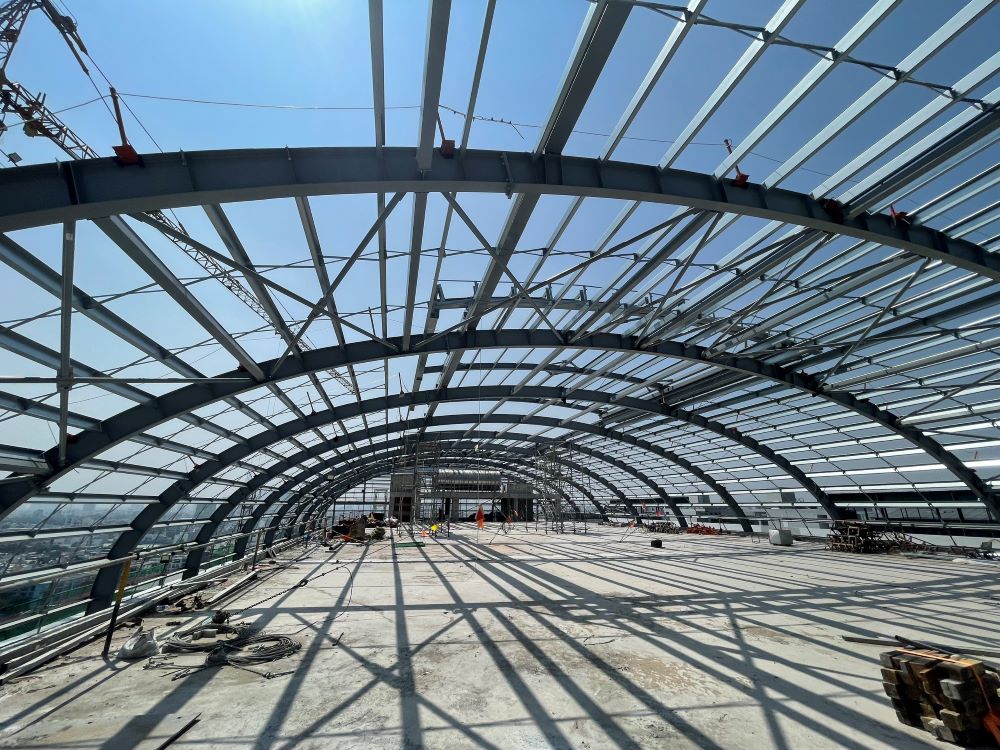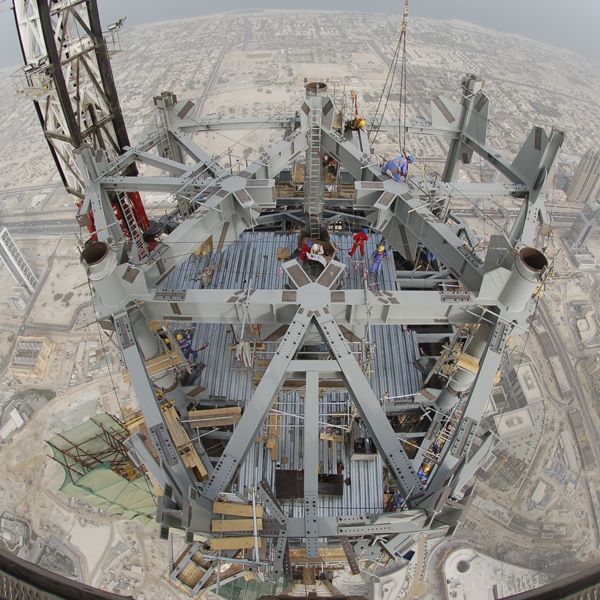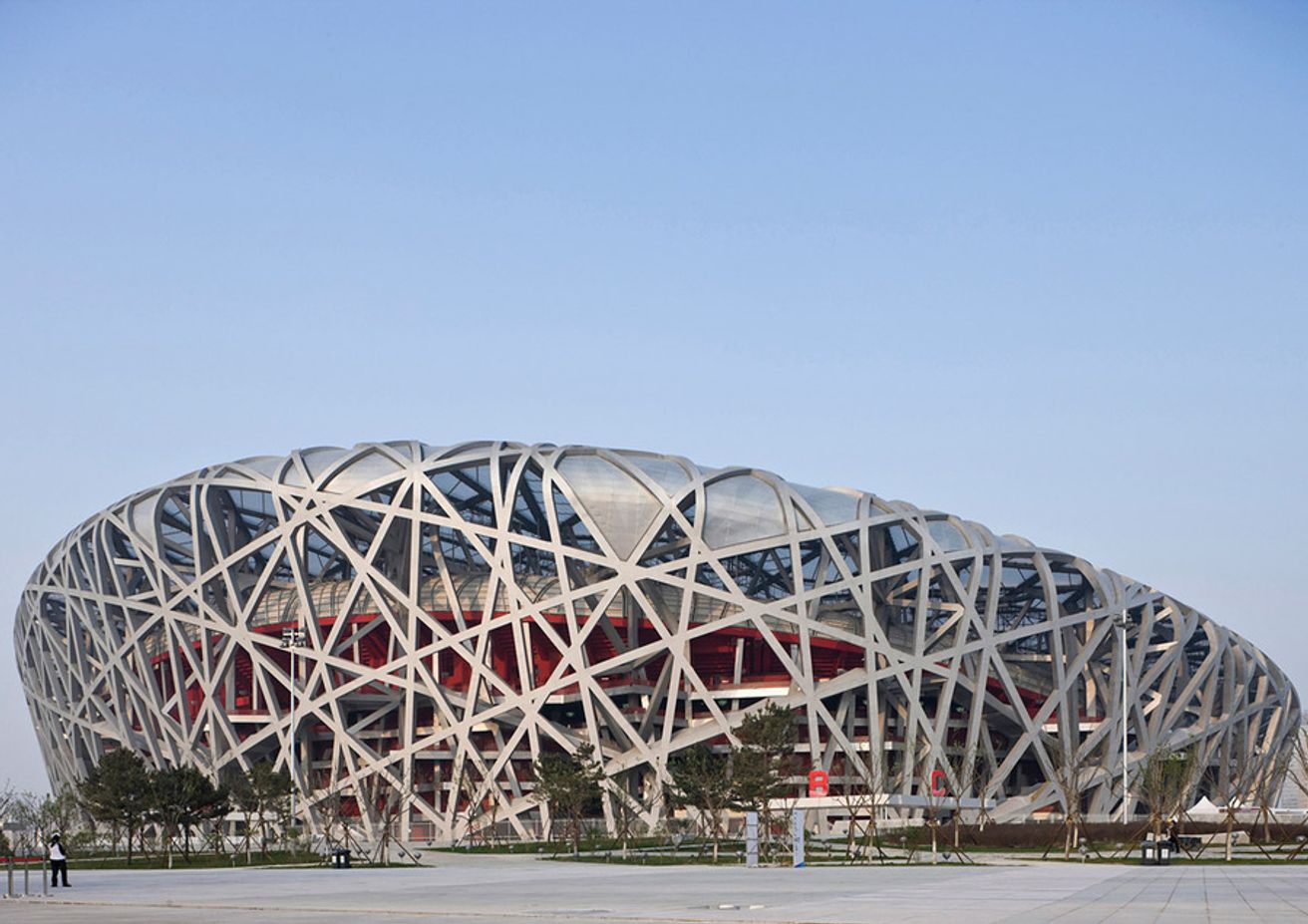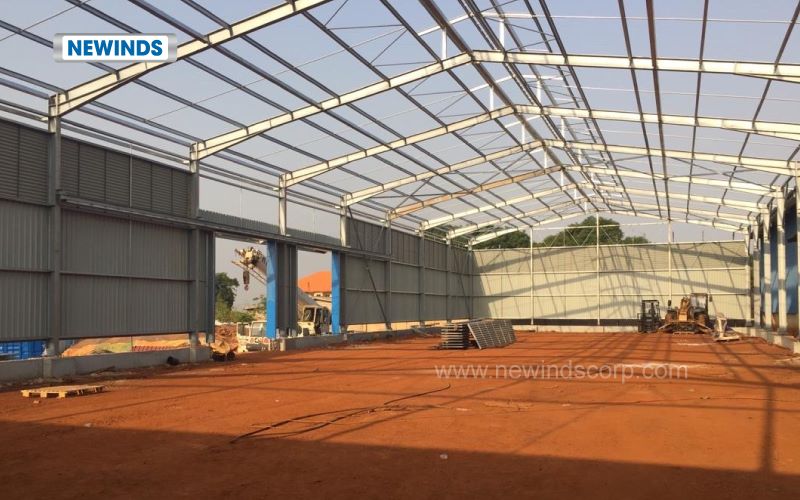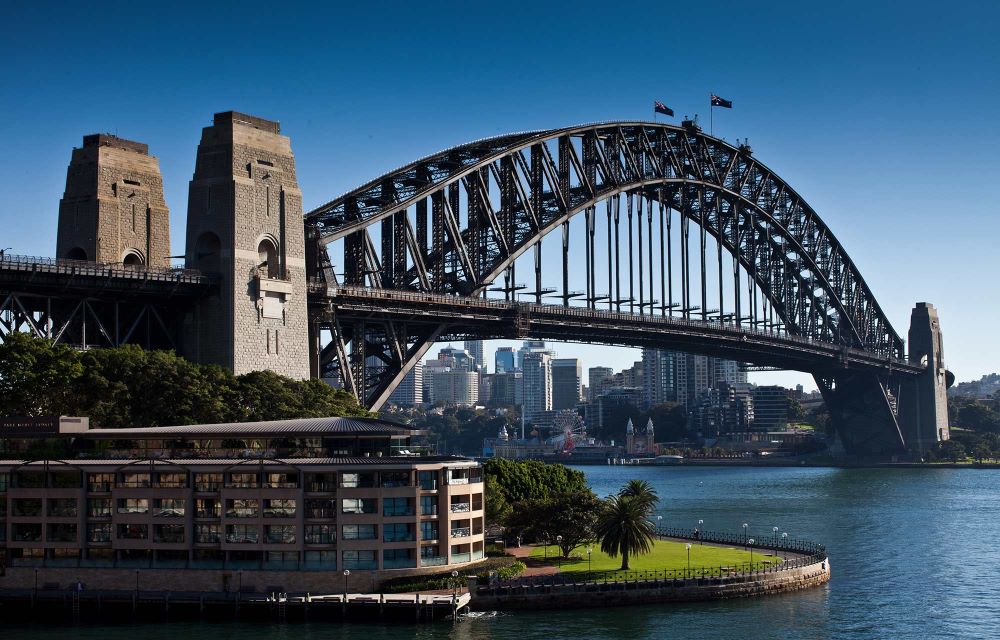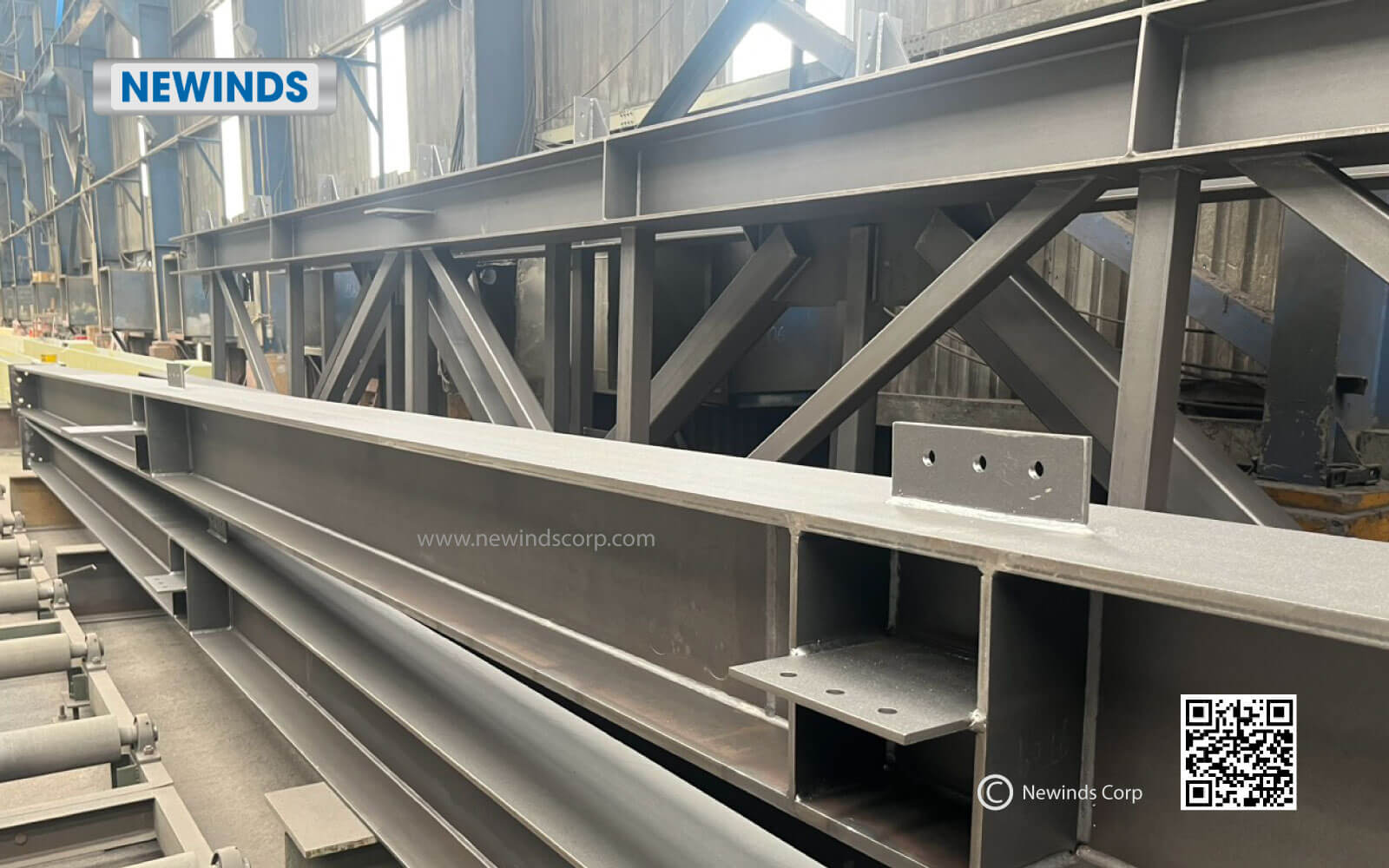The demand for constructing large-scale infrastructure projects to small and medium-sized industrial facilities is increasing, demonstrating that steel structures are an essential component in modern steel construction. Therefore, if you are researching steel structures, the article below will provide the most detailed insights.
WHAT IS A STEEL STRUCTURE?
A steel structure is a framework composed of interconnected steel components designed to bear loads and resist environmental forces. With high tensile strength (400–550 MPa), steel can withstand significant loads without requiring large material volumes, making it suitable for a wide range of projects, from large-scale to small and medium-sized constructions.
Key Components of Steel Structures
- Beams: Horizontal elements that carry loads.
- Columns: Vertical supports that transfer loads to the foundation.
- Trusses: Triangular frameworks for enhanced stability.
- Plates: Flat steel sheets for connections or cladding.
- Bracing: Diagonal elements to resist lateral forces.
TYPES OF STEEL STRUCTURES
-
Steel Frame Structures
Steel frame structures consist of a skeletal framework of vertical steel columns and horizontal steel beams connected by welds, bolts, or rivets.
Example: Burj Khalifa, Dubai (core steel frame)
-
Steel Truss Structures
Steel truss structures are frameworks composed of interconnected steel members arranged in triangular configurations to distribute loads efficiently.
Example: Beijing National Stadium (steel truss columns)
-
Pre-Engineered Buildings (PEB)
Pre-Engineered Steel Building (PEB) is a structural steel system designed and fabricated in a factory, then transported to the construction site for assembly into a complete project.
Example: Industrial facilities worldwide
-
Steel Arch Structures
Steel arch structures are steel frameworks characterized by curved or arched members that provide both structural steel support and aesthetic appeal.
Example: Sydney Harbour Bridge
-
Steel Plate Structures
Steel plate structures are robust frameworks constructed from flat steel plates, typically welded or bolted together, designed to withstand extreme loads and harsh environmental conditions.
COMPARISON BETWEEN STEEL STRUCTURE AND CONCRETE
| Criteria |
Steel Structure |
Concrete |
| Strength | High strength-to-weight ratio: Steel has a tensile strength of 400–550 Mpa, allowing it to support heavy loads with less material. | High compressive strength: Concrete excels at resisting compression (20–40 Mpa), suitable for foundations and heavy-load structures. |
| Durability | Long lifespan with coatings: 50–100 years with galvanization or epoxy coatings, resistant to corrosion in humid/coastal climates. | Susceptible to cracking: 50–70 years lifespan, prone to cracking under tensile stress or environmental exposure. |
| Construction Speed | Fast (prefabricated): 6–16 weeks for a 10,000 m² project. | Slower (curing time): 4–8 months for a similar 10,000 m² project. |
| Cost | Lower – cost: depending on the level of completion, design, and floor area. | Higher – cost: higher for complex designs. |
| Sustainability | Fully recyclable: Steel is 100% recyclable, with 30–50% recycled content in modern projects. | High carbon footprint: Cement production emits ~0.9 tons CO2/ton. |
| Flexibility | Highly flexible: Easily modified, expanded, or relocated (e.g., PEBs). | Limited flexibility: Difficult to modify or expand due to monolithic nature. |
FUTURE TRENDS IN STEEL STRUCTURES
-
Smart Steel
Smart steel involves embedding sensors and Internet of Things (IoT) devices into steel structures to monitor real-time performance metrics such as stress, strain, temperature, corrosion, and vibration.
-
3D Printing
3D printing, or additive manufacturing, is revolutionizing structural steel fabrication by enabling the production of complex, customized steel components with minimal waste.
-
Sustainable Steel
Sustainable steel focuses on using recycled steel and low-carbon production methods to meet Environmental, Social, and Governance (ESG) goals.
-
Modular Steel Construction
Modular steel construction involves fabricating steel structure components or entire modules off-site in controlled factory environments, then assembling them on-site.
STEEL STRUCTURE STANDARDS
Steel structures are widely used in modern construction, requiring stringent standards to ensure safety and durability. The primary global steel structure standards include:
– AISC 360 (USA): Issued by the American Institute of Steel Construction, this standard provides fundamental principles for load calculations, structural integrity, and connection methods.
– ASTM: Issued by the American Society for Testing and Materials, standards such as ASTM A36, A572, A992, and A500 specify mechanical properties (e.g., yield strength, tensile strength) and applications for steel in structures like factories, bridges, and high-rise buildings.
– EN 1993 (Eurocode 3): Issued by the European Committee for Standardization, this standard focuses on load-bearing capacity and fire safety, applied in EU countries and adopted globally.
– CSA S16 (Canada): Issued by the Canadian Standards Association, this standard outlines design, fabrication, and inspection rules for steel structures, emphasizing strength, stability, and weldability.
– AS/NZS (Australia/New Zealand): Issued by Standards Australia and Standards New Zealand, these organizations collaborate to develop joint AS/NZS standards, such as AS/NZS 4600 (for cold-formed steel structures) and AS/NZS 4100 (for steel structure design), ensuring safety, durability, and efficiency in construction across Australia and New Zealand.
– ISO 630: Issued by the International Organization for Standardization (ISO), ISO 630 specifies strength and reliability requirements for structural steel, used in internationally compliant construction projects.
– JIS G3101 (Japan): Issued by the Japanese Industrial Standards Committee (JISC), this standard governs hot-rolled steel for construction applications.
FAQs
- What is the Lifespan of a Steel building project?
With proper maintenance, a steel building can last over 50 years, with many exceeding 100 years in optimal conditions.
- How much does a steel building cost?
Costs for steel buildings vary based on design and location, with steel sheds or buildings typically costing $150–$500 per square meter.
- Are steel structures environmentally friendly?
After completing a project, if the investor wishes to change the business purpose, the structure can be easily and quickly disassembled for further construction or resale (resale price is approximately 1/3 of the original cost). This approach reduces construction waste and resource extraction.
- Can steel withstand earthquakes?
Steel structures are inherently suited for earthquake-resistant design due to their high ductility, flexibility, and strength-to-weight ratio, which allow them to absorb and dissipate seismic energy effectively.
To receive a free quote and learn more about steel structure fabrication, contact a reputable steel fabricator today.
Email: sales@newindscorp.com
Phone/Whatsapp/Zalo: Ann Yen +84 868 482 038
